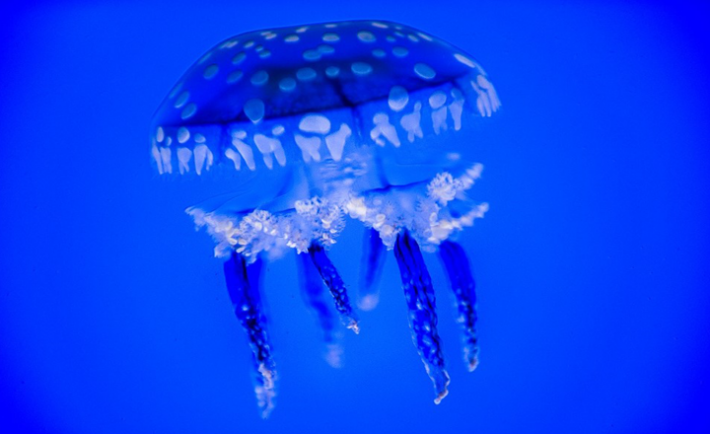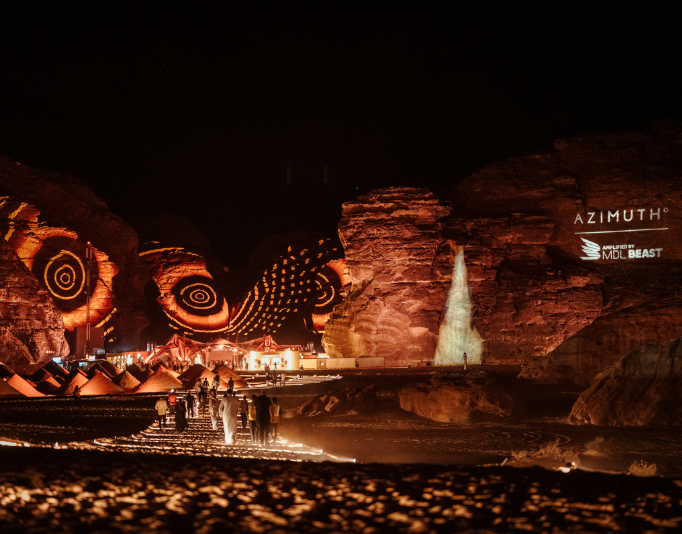Jeddah, December 2015: Fakieh Aquarium, striving to meet its self-defined mandate to put the wonders of the global aquatic world before the fascination-filled eyes of both the children and adults of Saudi Arabia, has announced the recent acquisition of four species of jellyfish that will be shown over time at the Aquarium on Jeddah’s North Corniche.
“The oceans are awesome places, as diverse and wondrous as any ecological zone on the planet,” commented Jay Bravo, On-Site Manager at Fakieh Aquarium for Clear Reef International. “We want to bring the diverse wonders of the underwater world to the aquarium and putting jellyfish on display is one way of doing that. People think ‘jellyfish’ and think of just one creature. Most people have no idea that jellyfish are as diverse as any other species.”
The spotted jellyfish, or mastigias papua as it is known among marine biologists, is native not to the Red Sea but to the Indo-Pacific waters. The average size is 10 cm, and in exceptional situations, they can grow up to 30 cm in diameter. The spotted jellyfish distinguishes itself by having not one mouth but many mouths located along their oral arms through which they feast on a large array of zooplankton.
The moon jellyfish, also known as aurelia aurita, ranges from 25cm to 40cm in diameter and is identified by its four horseshoe-shaped gonads. Their habitat is the eastern Atlantic coast of Northern Europe and the western Atlantic coast of North America, but they are also native to the Red Sea and the Pacific Ocean, where they feed on medusa, plankton and mollusks which it ensnares in its tentacles. Capable of very limited self-generated movement, the moon jellyfish aimlessly drifts with the ocean’s currents
The upside-down jelly fish, or cassiopea Andromeda — easily found in the Red Sea — is the only one of the newly acquired jellyfish to be able to sting possible enemies
harmfully and generally makes its home in the warm water of intertidal sand or mud flats, shallow lagoons and around mangrove trees. Measuring up to 30cm in width, the upside-down jellyfish is so-named because it usually lies upside down on the floor of its habitat. It does this in order to use its bell to vibrate and make the water flow through its arms for respiration and capturing food.
Finally, the Phyllorhiza punctate, commonly known as the Australian spotted jellyfish, is native to the West Pacific from Australia to Japan, but they have been found around the Hawaiian Islands, in the Mediterranean Sea and the Gulf of Mexico. They can reach a diameter of 50 cm on their bell.
Four different kinds of jellyfish from different aquatic climates all grouped together at the edge of the Red Sea – the challenges are many. Simple though they may be, each type of jellyfish has adapted to specific natural environments that must be recreated in the artificial setting of an aquarium. Each type demands a specific range of water temperatures salinity, light and exogenous cues for strobilation, or the asexual reproductive process that characterizes jellyfish.
“We have undertaken this serious collection of marine life in Jeddah because, in our hearts, we want to see that look of awe and fascination that captures a child’s face when he or she first encounters some unknown wonder of the world,” said Jamil Attar, Executive Director of Tarfeeh Fakieh. “That, I believe, lies at the heart of the concept of ‘edutainment.’”










